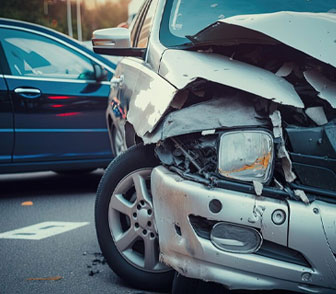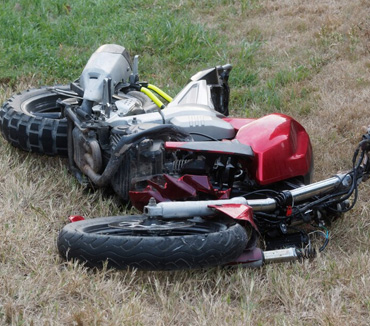Proving Fault: The 4 Elements of Negligence
The basis for a personal injury lawsuit after you have been in an accident focuses on a legal concept that is known as negligence. Most accidents could have been avoided but occurred due to negligence or intentional wrongdoing.
If you or a loved one has been injured at the fault of someone else, you are entitled to collect compensation for the losses associated with your injury, including medical bills, related repairs and lost earnings. In order to collect these damages, it is often necessary that the party that caused your injury was negligent. You should get the help of a personal injury attorney when you are pursuing a personal injury claim against another party.
When a personal injury attorney reviews your case, they need to determine if you have a viable case. What makes a personal injury claim viable can include everything from the statute of limitations to the cost of proving your case compared to the amount you can be expected to recover. Only an experienced personal injury attorney can help you truly determine the value of your case.
You need to understand that your claim hinges on negligence and the four elements of negligence and how they relate to one another is very important. We discuss this further here.
What is Negligence?
Negligence is the failure to act with reasonable care or acting in a manner in which a reasonably careful individual would not when facing similar or the same circumstances to protect others or himself/herself from property damage, bodily injury or death. If a person violates their duty to you, the standard of conduct applicable to the situation, then the law requires the defendant to compensate the individual who was injured or experienced loss.
Usually, negligent conduct involves an action that leads to damages. When driving, the standard of conduct is that you drive in line with the rules of the road and that you stay attentive in case an emergency situation arises. Driving negligently might include driving drunk, weaving between two lanes at once, failing to allow pedestrians to safely cross, or not watching the road. Some standards of conduct are established by law, as when a driver is speeding, which makes them “negligent per se” which is negligence because of their illegal activity.
Negligence Has Four Elements to Prove
There are four distinct elements or components of negligence. If you cannot successfully establish each of these elements, you will not be entitled to compensation for your personal injury claim.
For the defendant to be found negligent, their actions must meet the four elements of negligence, which are:
- Duty of care
- Breach of duty
- Causation
- Damages
If even one element of negligence is not proven, then the alleged defendant (will not be found liable, and you cannot collect on damages, highlighting the value of having an attorney on your side as soon as possible after your injury to help with your claim.
- Duty of Care
For a society to work properly and safely, each person has a duty of care to others in all circumstances. Duty of care is the legal responsibility you have as an individual not to injure or harm another person. This element of negligence states that the possibility of harm must be “reasonably foreseen.” The duty of care is a standard of care in a particular situation, one that is established by factors including the relationship of the parties and the rules in place concerning the activity. Driving is governed by traffic laws, for example, and a store owner has a duty to keep customers safe from things such as spills, loose fixtures and other foreseeable dangers.
If a person injures themselves on property that is not well-maintained, the store or property owner may have breached their duty of care. A person’s duty of care in personal injury cases can also involve such things as that of an animal owner. Simply by owning an animal, you accept the duty of care responsibility to keep other people protected from bites and attacks.
There are situations where a legal duty is created in the relationship between the plaintiff and the defendant. A duty of care arises when the law recognizes a relationship between two parties, and due to this relationship, one party has an obligation to exercise the same level of reasonable care that another person in a similar situation would exercise.
- Breach of Duty
For a successful personal injury claim, the opposing party must have breached their duty of care. What this means is that they failed to uphold their legal responsibility to keep others safe, either through reckless action or lack of action.
Breaching the duty of care involves the party failing to act reasonably, or in a way that another person could be expected to act in a similar situation. This breach of duty requirement is part of what protects people from being sued in simple accidents. Should the store owner have known to make those same necessary repairs? Would another driver know that driving at that speed was dangerous? These are all important facts to consider.
The court will need to determine if the defendant breached this duty by doing or not doing something that an average person would do if they were in a similar circumstance.
A jury might likely find a defendant negligent if an average person:
- Knew everything the defendant knew at the time; and
- Would have known his/her actions might cause an injury to someone else; and
- Would have done something different from what the defendant did in that situation.
- Causation (Cause in Fact)
Causation is third on the list of the four elements of negligence, and it is extremely important. In a personal injury case, causation means that the opposing party’s breach of duty to uphold a standard level of care is the direct result of your injury and that without the negligent behavior, you would not have been injured.
If the action caused the plaintiff injury through an unexpected act of nature, then it would be deemed unforeseeable, most likely making the defendant to be found not liable.
For example, if an elderly person trips while walking on uneven pavement, leading to a break that requires surgery, physical therapy and/or time off of work, the cause of your injury is the break resulting from the uneven pavement. The property owner had the duty of care to keep safe for pedestrians. By failing to keep the pavement safe, they breached their duty, and it resulted in the injury. If they had fixed the uneven pavement, you likely would not have broken a bone and ended up in the hospital with an injury. This is what the law refers to as causation.
- Damages
Damages are the final element of negligence. Because the plaintiff suffered injury or loss which a reasonable person in that same situation could expect or foresee, monetary compensation may be the only form of relief for those injuries. Damages include medical care, lost wages, emotional pain and more. Establishing that you incur damages as the result of your injury is essential, as this is what you are filing a personal injury case to reclaim.
Having an experienced personal injury attorney on your side is essential, as you may not realize all of the damages you are entitled to claim as a result of your injury. Your personal injury claim may be worth much more than you realize and a good personal injury lawyer can help you get the largest settlement possible. If you are considering filing a claim, speak with an attorney before you do so to ensure you are asking for all that you deserve.
The Types of Negligence
Different states have different laws regarding auto accidents. States either recognize comparative negligence or contributory negligence. The most significant difference between comparative and contributory negligence is that contributory negligence does not allow the accident victim to recover compensation for his or her damages if he or she contributed to the accident while comparative negligence allows the accident victim to recover his or her losses.
- Comparative Negligence
Comparative negligence is when the courts will work to determine how much each party is responsible for an injury. If they determine that you are 25% responsible and the other party is 75% responsible, they will assign damages based on that. For example, if the courts would have awarded you $100,000 for your injuries related to a car accident, but they found that you were 25% responsible for the accident, you would only receive $75,000.
- Contributory Negligence
When dealing with personal injury cases, if the concept of contributory negligence is used it will mean that you need to show that the other party is 100% at fault for your injury. If you contributed to the injury in even a small way, they would not have to compensate you for the injury. For example, if you were rear ended in an auto accident, but the other party can show that one of your brake lights was out, you would be entitled to nothing. Even if they were driving too fast for conditions and not paying attention, the fact that your brake light may have contributed even a small amount to the accident means you would be entitled to nothing.
A Car Accident Lawyer Can Make All the Difference
If you have been involved in a collision, even if law enforcement comes to the scene, the responding officer may not make a determination of fault in the accident report — or they could even make an incorrect fault determination. And in the absence of any definitive word, if different witnesses say different things, it will not take much for the other driver to claim that the accident was your fault. It may make sense to put your car accident case in the capable hands of an experienced personal injury attorney, who will build your strongest case and put you in position for the best outcome.
If you or a loved one has suffered injury in a T-bone accident and have questions about seeking legal action, call us now at 1-877-241-9554 to learn more about your options. A free consultation is just a phone call away.
Request A
Free Consultation
Fields Marked With An ” *” Are Required











